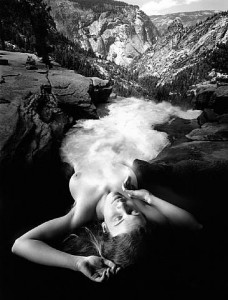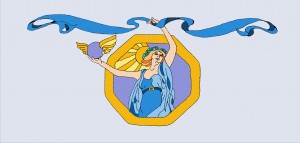 “Post Visualization” photographers whose motivation lay in making pictures rather than taking photographs. This statement can be used to describe the showing at the PEM– ” The Mind’s Eye: 50 years of Photography by Jerry Ulesmann.
“Post Visualization” photographers whose motivation lay in making pictures rather than taking photographs. This statement can be used to describe the showing at the PEM– ” The Mind’s Eye: 50 years of Photography by Jerry Ulesmann.
Surreal, funny and provocative, Jerry Uelsmann’s photographs are icons of American photo history. His most famous technique — seamlessly fabricating photographs from unrelated negatives to create imaginary scenes — cemented his standing as a leading light of non-literal photography. The exhibition combines Uelsmann’s most celebrated works with many never-before-seen pieces for his first retrospective in 40 years.
As a pioneer of contemporary photography and master of experimental darkroom technique, Uelsmann has continuously pushed the creative and technical boundaries of photography, revealing new visual possibilities and critical considerations for the medium. In the late 1950s, Uelsmann began experimenting with multiple enlargers and advanced masking, diffusing, burning and dodging techniques, to create imaginary images in the darkroom decades before the advent of Photoshop. Uelsmann’s ingenious work references Surrealists like Rene Magritte, Max Ernst, and Man Ray, as well as Modern photographers such as Edward Weston and Ansel Adams. He has spent his career advocating for the acceptance of experimental photography as an art form.
“For more than half a century, Uelsmann has challenged conventional ideas about what photography can and should do,” said Phillip Prodger, exhibition curator and PEM’s curator of photography. “My visual quest is driven by a desire to create a universe capable of supporting feelings and ideas,” said Jerry Uelsmann. “I am drawn to art that challenges one’s sense of reality.”
I loved that the PEM had a short video clip showing Uelsmann describing and demonstrating his process to further explain how Uelsmann’s images come to life.
The campus also includes period gardens and Ying Yu Tang, an 18th-century Chinese merchant’s house transported from China and reassembled here. Another highlight not to be missed!
Yin Yu Tang
Enter the Huang family ancestral home to gain a rare perspective on Chinese art, architecture, and culture
During the Qing Dynasty (1644-1911), a prosperous merchant surnamed Huang built a stately sixteen-bedroom house in China’s southeastern Huizhou region, calling his home Yin Yu Tang. Among the many literary interpretations of this name is the desire for the home to shelter generations of descendants. Yin Yu Tang was home to the Huang family for more than two hundred years until 1982 when the last descendants moved from the village.
The home was oriented in the village according to principles of feng shui to ensure a harmonious relationship with the landscape and was constructed according to local building traditions and customs. Coins were placed under structural columns to bring prosperity to the home’s inhabitants. The first floor bedrooms have intricately carved lattice windows that look out onto two fish pools in the central courtyard. These details tell as much about the aspirations, identity, and creative expression of the Huang family as they do about the architectural heritage of the region.
With the museum’s already extensive collections of Asian art and period architecture, the acquisition of Yin Yu Tang provides unrivaled opportunities to explore the artistic and cultural heritage of rural China and the multi-faceted, often surprising, connections between Asia and America.

Comments are closed.